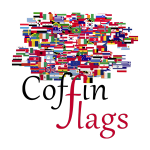Description
 Vietnam, officially the Socialist Republic of Vietnam, is the easternmost country on the Southeast Asian Indochinese Peninsula. With an estimated 95.5 million inhabitants as of 2018, it is the 15th most populous country in the world. Vietnam shares its land borders with China to the north, and Laos and Cambodia to the west. It shares its maritime borders with Thailand through the Gulf of Thailand, and the Philippines, Indonesia and Malaysia through the South China Sea. Its capital city is Hanoi, while its most populous city is Ho Chi Minh City.
Vietnam, officially the Socialist Republic of Vietnam, is the easternmost country on the Southeast Asian Indochinese Peninsula. With an estimated 95.5 million inhabitants as of 2018, it is the 15th most populous country in the world. Vietnam shares its land borders with China to the north, and Laos and Cambodia to the west. It shares its maritime borders with Thailand through the Gulf of Thailand, and the Philippines, Indonesia and Malaysia through the South China Sea. Its capital city is Hanoi, while its most populous city is Ho Chi Minh City.
The flag of Vietnam, or “red flag with a gold star” (cờ đỏ sao vàng), was designed in 1940 and used during an uprising against French rule in southern Vietnam that year. Red symbolises the goals of social revolution behind the Vietnamese national uprising. The star represents the five main classes in Vietnamese society—intellectuals, farmers, workers, business people and military personnel. The flag was used by the Viet Minh, a communist-led organisation created in 1941 to oppose Japanese occupation. At the end of World War II, Viet Minh leader Ho Chi Minh proclaimed Vietnam independent and signed a decree on 5 September 1945 adopting the flag as the flag of North Vietnam. The DRV became the government of North Vietnam in 1954 following the Geneva Accords. The flag was modified on 30 November 1955 to make the edges of the star sharper. Until the end of the Vietnam War in 1975, South Vietnam used a yellow flag with three red stripes. The red flag of North Vietnam was later adopted as the flag of the unified Vietnam in 1976.







